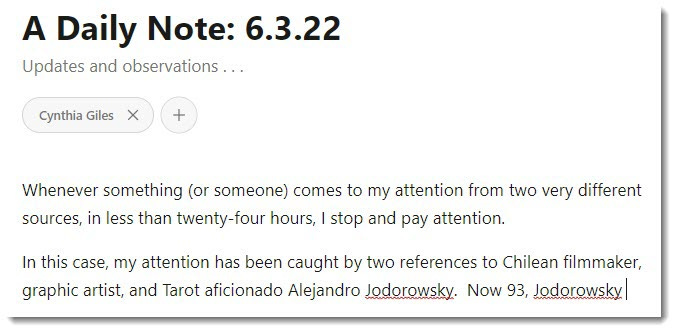Here’s where I got to last Friday, starting on the third post in a planned series of Daily Notes:
At that point, another Jodorowsky item popped up—and changed my whole approach to the story.
So I decided to think about the whole topic overnight and take a fresh look the next morning. Obviously, that thinking process has gone on for several days now, so I…




